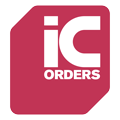Integrated circuits (ICs) have revolutionised the world of electronics. These miniature circuits have found their way into almost every electronic device we use today. This article delves into the realm of integrated circuit solutions, exploring their history, how they work, their types, and the various applications in which they are used.
Understanding Integrated Circuits
At its core, an integrated circuit is a set of electronic components such as transistors, diodes, resistors and capacitors, all fabricated onto a small chip of semiconductor material. The integration of these components into a compact form factor has enabled the development of complex electronic systems that are both cost-effective and efficient.
The invention of the integrated circuit in the late 1950s marked a significant milestone in the field of electronics. Jack Kilby of Texas Instruments and Robert Noyce of Fairchild Semiconductor are credited with this groundbreaking innovation. Their work paved the way for the miniaturisation of electronic devices and set the stage for the digital revolution.
How Integrated Circuits Work
Integrated circuits function by utilising the properties of semiconductor materials, primarily silicon. These materials have the unique ability to conduct electricity under certain conditions and insulate under others. By manipulating these properties, electronic components such as transistors and diodes are created.
The components are interconnected to form a circuit that performs a specific function. For instance, a digital integrated circuit can perform logical operations, while an analogue integrated circuit can amplify signals or perform other tasks related to signal processing.
The Fabrication Process
The process of fabricating an integrated circuit involves several steps. It begins with the creation of a silicon wafer, which is then coated with a layer of silicon dioxide. This layer is patterned using photolithography to create the layout of the circuit.
The patterned wafer is then subjected to various processes such as doping, etching, and metallisation to form the electronic components and interconnections. Once the fabrication process is complete, the wafer is cut into individual chips, each of which is an integrated circuit.
Types of Integrated Circuits
Integrated circuits can be broadly classified into two types: analogue and digital. Analogue ICs, also known as linear ICs, are used in applications where continuous signals are involved. They find use in devices such as audio amplifiers, radio receivers, and power management circuits.
Digital ICs, on the other hand, work with binary data and are used in computers, smartphones, and other digital devices. They can be further categorised into logic ICs, memory chips, microprocessors, and others.
Hybrid Integrated Circuits
There is also a third category known as hybrid integrated circuits, which combine both analogue and digital components on a single chip. These circuits are used in applications where both analogue and digital processing is required, such as in communication systems and signal processing circuits.
Applications of Integrated Circuits
Integrated circuits have a wide range of applications. They are used in virtually every electronic device, from simple calculators to complex computers. They are also used in communication systems, automotive electronics, industrial control systems, and many other areas.
Their small size, high reliability, and low cost have made them an indispensable part of modern electronics. As technology continues to advance, the role of integrated circuits in electronic devices is only set to increase.
Future Trends in Integrated Circuit Solutions
The field of integrated circuits is constantly evolving, with new technologies and materials being developed. One such trend is the move towards smaller and more efficient circuits. This is being achieved through advancements in fabrication techniques and the use of new semiconductor materials.
Another trend is the increasing integration of different types of circuits on a single chip. This is leading to the development of system-on-chip (SoC) solutions, which integrate all the components of an electronic system onto a single chip. Such solutions offer significant benefits in terms of cost, power consumption, and performance.
With the advent of technologies such as the Internet of Things (IoT) and artificial intelligence (AI), the demand for advanced integrated circuit solutions is set to grow. These technologies require highly integrated and efficient circuits, and the field of integrated circuits is poised to meet this demand.
Conclusion
Integrated circuits are a fundamental part of modern electronics. Their ability to perform complex tasks in a compact form factor has revolutionised the field of electronics. As technology continues to advance, integrated circuit solutions will play an increasingly important role in shaping the future of electronics.
As you embrace the future shaped by integrated circuit solutions, remember that finding the right components is crucial for your electronics projects. With over 12 years of experience in the electronic component market, IC Orders stands ready to be your go-to independent distributor. Whether you’re searching for a specific part number or need assistance in completing your BOM, we’re here to ensure your needs are met with precision and expertise. Contact Us for A Quote Today and let us help you streamline your electronics endeavors.
